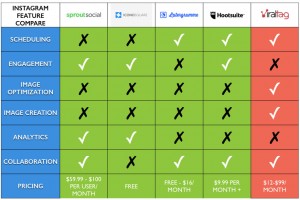— December 18, 2017

geralt / Pixabay
200-page business plan documents are cumbersome projects that often render themselves obsolete in a fraction of the time it took to initially create the document. Declaring business plans “dead”, however, removes too much of the responsibility around planning as an entrepreneur, often misleading entrepreneurs into thinking that they don’t need to do any structured planning.
In my work at Palo Alto Software, I’ve found that “Lean Planning” offers an ideal balance for most entrepreneurs. Lean Planning is hybrid approach that allows for agile thinking and iterative testing without setting aside the structure of a laid out plan. This approach has worked for our business and many other founders we work with, but it’s also proven to work through academic studies. Companies that track their progress and continually refine their goals actually grow 30 percent faster than companies that don’t incorporate planning into the process of running their business.
How to use the Lean Planning model
There are four basic steps that are repeated with Lean Planning: create the plan, test your idea, review your results, and revise your plan.
1. Draft the Plan
Your initial “plan” is really a one-page pitch of your business. This document should provide a concise introduction that answers the questions: what are you going to do, and how are you going to do it? Challenge yourself to keep this to one page, and expect that you’ll make changes more than once (some entrepreneurs find templates useful for this step).
2. Test
Now that you’ve compiled assumptions about your business, it’s time to test. Here are the key questions you need to answer:
- Do your potential customers have the problem you think they have?
- What do your potential customers think of your solution?
- What’s the best way to sell to your potential customers?
- What marketing tactics will work?
3. Review Findings
Most often, you’ll uncover things about your one-page plan that need to be adjusted as you talk to more potential customers. At this stage, it’s critical to track key metrics to know how you are doing and to make adjustments quickly if needed.
4. Revise the Plan
Based on findings from potential customer interviews, most entrepreneurs need to modify their target market, assumptions about customers, or even change their solution. This is where entrepreneurs appreciate the time-savings associated with lean planning: they can easily return to their initial document and make adjustments without having to start from scratch or trash a plan that already cost them countless hours.
Walk away with a foundational roadmap
Strong lean planning results in a living, functional tool that guides your business growth and that can easily be revisited to serve your needs — whether that’s forecasting for the coming year, getting a loan, or seeking investment. Once the Lean Planning process is complete, entrepreneurs can begin developing the next key stages of their forecasting: sales, expenses, and cash flow. Fortunately, because Lean Planning is a simple process with a one-page pitch for your strategy, all additional forecasts should be relatively easy to adjust.
Ultimately, the best business plans involve a blend of anticipated outcomes and space for agile responses when circumstances evolve differently. Today’s founders are not wrong to question seemingly dated models, but should always temper a “lean” approach with some of the critical research and tentative planning that goes into deeply understanding their market, customer, and industry.
Business & Finance Articles on Business 2 Community
(101)







